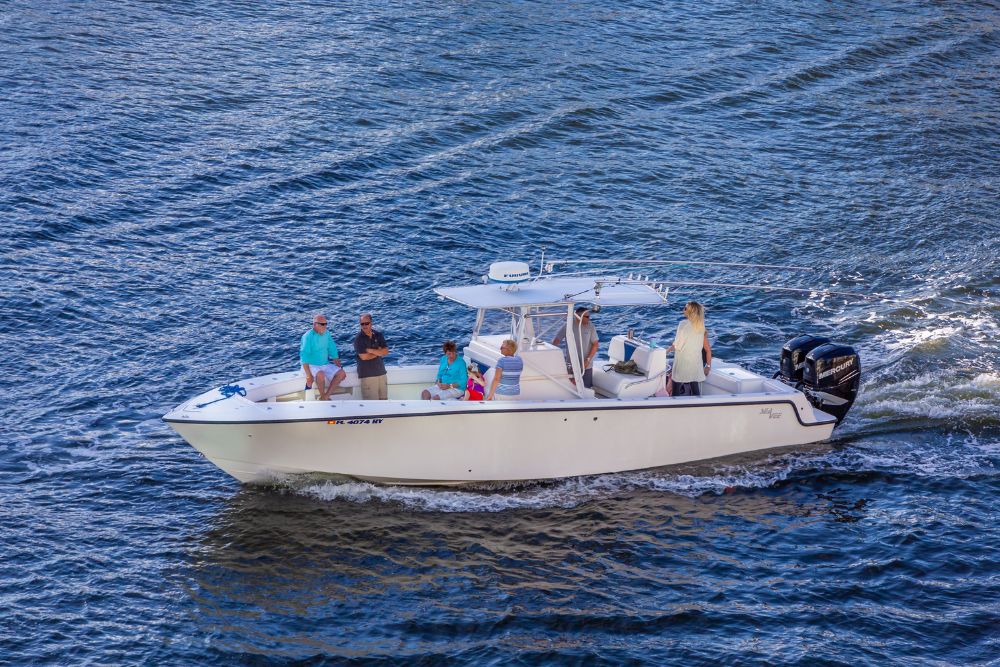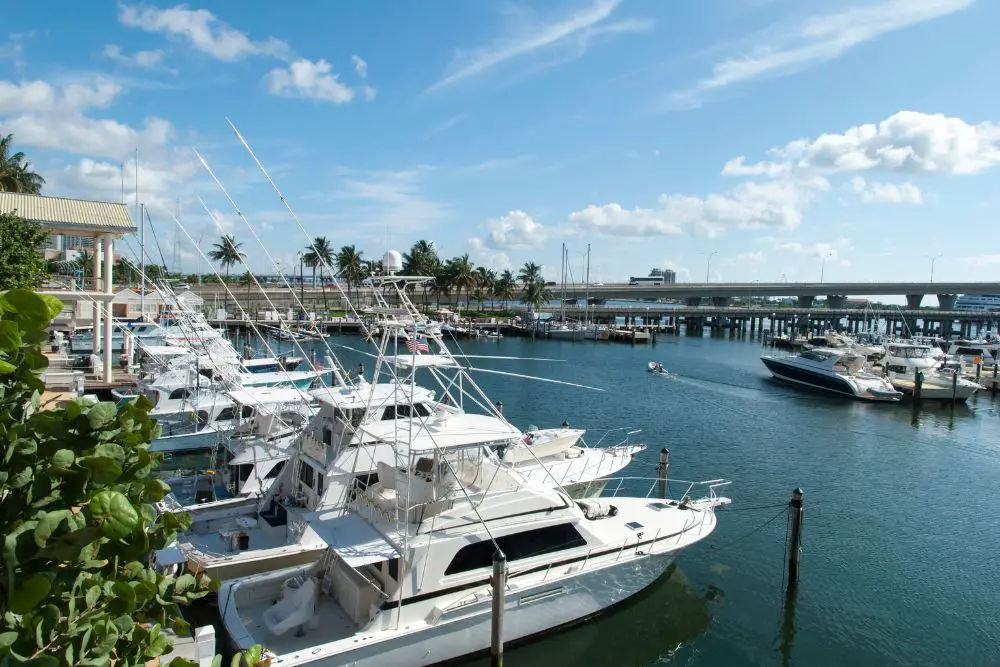If you’re a boat owner, then you know that fueling your boat is an important but sometimes tedious task. It’s important to do some preparations beforehand to make the process as smooth as possible.
Many people don’t realize the importance of following the correct protocol before fueling their boat. Incorrect fueling can have severe consequences, so it’s crucial that you take the necessary precautions. Always tie up your boat before fueling, empty the boat of people, and shut off all sources of sparks such as the engine, electronics, and burning tobacco. By following these simple steps, you can help prevent an accident.
- The Safety Steps To Follow Before Fueling Your Boat
- Read the Owner's Manual
- Tying Your Boat Securely
- Turning Off The Engine
- Don't Have Passengers On The Boat
- Check for Leaks
- Turn Off All Electronic Devices
- Make sure to use the correct fuel type
- Check with the fuel dock or marina about fueling policies
- Fill Up Slowly
- Making Sure The Fire Extinguisher Is Within Reach
- No smoking when fueling
- Wipe Down Your Deck
- Why You Should Follow Safety Rules Before Fueling Your Boat
- In Conclusion
The Safety Steps To Follow Before Fueling Your Boat
Before you fuel your boat, you need to take a few safety steps to ensure a safe and successful fueling process. By following these simple steps, you can help prevent accidents or injuries. Let’s consider what you need to do before fueling your vessel.
Read the Owner’s Manual
Before you start fueling your boat, it’s important that you read the owner’s manual. Every boat is different, and each one has its own specific set of requirements when it comes to fueling. For example, some boats require that you remove certain covers before refueling, while others have special venting systems that need to be turned on or off. By reading the manual, you’ll know exactly what needs to be done to fuel your boat safely.
Tying Your Boat Securely
One of the most important safety steps to follow before fueling your boat is to tie it down securely. This will help prevent your boat from moving around while you are fueling it. You should also ensure that the area around your boat is clear of any obstacles that could cause tripping or falling.
Turning Off The Engine
Another important safety step is to turn off the engine before fueling your boat. This will help prevent any accidents from happening while you are fueling the boat. If you have an automatic shut-off switch, be sure to use it as well.

Don’t Have Passengers On The Boat
It is also important not to have any passengers on the boat while you are fueling it. This will help prevent them from being injured in case of an accident. If you must have passengers on the boat, make sure they are aware of the potential risks and are staying clear of the area where you will be fueling the boat.
Check for Leaks
Once you’ve located the fuel fill port and removed any necessary covers, it’s time to check for leaks. The last thing you want is gas spilling onto your deck or into the water. To check for leaks, put your finger over the fuel hose’s end and gently squeeze it. If gasoline comes out around your finger, then there’s a leak in the hose. Do not attempt to fuel your boat until you’ve repaired the leak!
Turn Off All Electronic Devices
Anytime you deal with flammable liquids like gasoline, it’s important to take precautions against sparks or other ignition sources. The best way to do this is to turn off all electronic devices while you’re fueling. This includes cell phones, radios, and cigarettes. If someone does need to call you while you’re fueling up, tell them to wait until you’re finished before they attempt to make contact.
Make sure to use the correct fuel type
Depending on your engine type (outboard, inboard, jet drive, etc.), you’ll need to use a specific fuel type. Be sure to double-check what type of fuel your engine requires before pumping it full of gas. If you’re unsure, ask someone at the marina for help.

Check with the fuel dock or marina about fueling policies
Some marinas have their own policies and procedures for fueling boats. Be sure to ask about these before starting so that you know what’s expected of you.
Fill Up Slowly
Once everything is turned off and ready to go, it’s time to start filling up your tank. But don’t just hold down the nozzle and let ‘er rip! Filling up too quickly can create static electricity, which could ignite the fumes and cause an explosion. Instead, fill up slowly, letting the gasoline flow in a steady stream. This will help prevent static buildup and keep everyone safe.
Making Sure The Fire Extinguisher Is Within Reach
One final safety precaution to take before fueling your boat is to make sure that the fire extinguisher is within reach. In case of a fire, this will help ensure that you are able to put it out quickly. Be sure to check the expiration date on the fire extinguisher and replace it if necessary.
No smoking when fueling
This should go without saying, but no smoking! Not only is it dangerous because of the potential for sparks, but cigarette smoke can also give rise to dangerous fumes when mixed with gasoline vapors.
Wipe Down Your Deck
After filling up your tanks and replacing all the covers, it’s important to wipe down your deck with a rag soaked in soap and water. This will help remove any spilled gasoline from your boat so that it doesn’t present a fire hazard later on down the road. And that’s it! Just follow these five simple steps every time you need to refuel your boat, and you’ll be sure to stay safe out on the water.
Why You Should Follow Safety Rules Before Fueling Your Boat
Before you fuel your boat, reviewing basic safety rules is important. Doing so will help prevent accidents and ensure that everyone remains safe. There are three main things to keep in mind: watch for fuel spills, be careful with smoking materials, and practice good ventilation. Keep reading to learn more about each of these three topics.
Watch for Fuel Spills
The first thing you need to do is watch for fuel spills. When you’re fueling your boat, pay close attention to the nozzle and the tank. If you see any fuel spillage, immediately shut off the pump and clean up the spillage with Absorb-It or a similar product. Once the area is clean, you can restart the fueling process.
Be Careful with Smoking Materials
The second thing to keep in mind is to be careful with smoking materials. If you’re a smoker, it’s best to abstain from smoking while you’re fueling your boat. If you must smoke, however, make sure that you dispose of your cigarette butt properly. The best way to do this is to put it out in a cup of water before throwing it away.
Practice Good Ventilation
Last but not least, practice good ventilation while you’re fueling your boat. Fuel fumes can be dangerous, so it’s important to make sure that there’s plenty of fresh air circulating while you’re working. To do this, open up all the hatches and windows on your boat before starting the fueling process. Then, once you’re finished fueling, spend a few minutes letting the fumes dissipate before closing everything back up again.
In Conclusion
Fueling your boat doesn’t have to be complicated or dangerous as long as you take a few basic safety precautions. By following these simple tips, you can rest assured that everyone will stay safe while you’re refueling your vessel.



